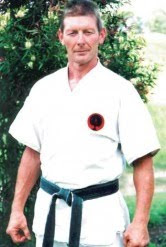Shaking, extraneous movement and inefficient technique

Introduction I was going to call to call this article “For goodness sake, don’t do the hippy hippy shake”. But then I realised that this would prompt readers to think that I was referring to my old pet peeve, pre-loading the hip (or the “ double hip ”). 1 This article is not about that subject (which is only obliquely relevant). Instead, this article is about the kind of shaking that results from extraneous and uncontrolled movement (rather than deliberate, if contextually inappropriate, hip loading). Punching with “hara” It was in 1988 that I first trained with Graham Ravey, founder of the TOGKA and former deshi of Higaonna Morio. At that training a certain local goju kai teacher (who shall go nameless, but who introduced himself as “Shihan […]”) pulled me aside and said: “You have good technique – but you have no ‘hara’. “Hara,” he told me, “means ‘heart’. Your techniques have no heart.” Of course, “hara” is a Japanese term that is used in the martial arts to refer to the d...
